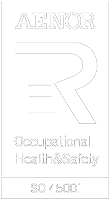Polyethylene Cables or PE cables can refer to different types of cables depending on the context. “PE” can stand for various things, such as “Polyethylene”. Polyethylene is a common plastic used for insulation in electrical cables due to its excellent electrical properties, durability, and resistance to moisture and chemicals. These cables are used in various applications, including power distribution, telecommunications, and data transmission.
Polyethylene cables are electrical or communication cables that use polyethylene as an essential component of their construction, either as an insulation material, sheathing material, or both. Polyethylene is a thermoplastic polymer known for its excellent electrical insulating properties, resistance to moisture, and durability. There are various types of PE cables used in different applications:
PE-Insulated Cables: In some cables, polyethylene is used as the insulation material surrounding the conductors. PE-insulated cables are commonly used in power distribution and transmission systems. They offer good electrical properties and are suitable for both overhead and underground applications.
PE-Sheathed Cables: PE can also be used as the outer sheath material for cables. This outer sheath provides protection against environmental factors such as moisture, chemicals, and physical damage. PE-sheathed cables are used in various applications, including outdoor installations and direct burial.
PE Communication Cables: In the context of communication and data transmission, PE may be used in the construction of coaxial cables or data cables. It can serve as an insulating layer or outer jacket in these cables, helping to maintain signal integrity and protect against external influences.
PE-X Cables: Cross-linked polyethylene (PE-X or PEX) is another variant of polyethylene used in cable insulation. PE-X offers improved thermal and mechanical properties compared to standard PE and is often used in high-temperature or harsh environment applications.
The specific standards and specifications for these cables may vary depending on their intended use and the region in which they are deployed. Relevant standards organizations like the International Electrotechnical Commission (IEC), British Standards Institution (BSI), and others provide guidelines for the design, manufacturing, and testing of these cables to ensure safety and performance.
Standards for Polyethylene cables, whether they are used for electrical or communication purposes, can vary depending on the specific application and region. Here are some notable standards and specifications that may apply to PE cables used in these contexts:
- IEC 60502-1: This International Electrotechnical Commission (IEC) standard covers power cables with extruded insulation and their accessories. It includes various types of insulation materials, and polyethylene (PE) may be one of them. This standard is widely used for power distribution and transmission cables.
- IEC 60794 Series: The IEC 60794 series of standards covers optical fibre cables, including those with PE outer sheaths. These standards provide specifications for optical fibre cables used in telecommunications and data transmission.
- IEC 61156 Series: These standards specify the characteristics and requirements for various types of communication cables, including those used for LAN (Local Area Network) and data communication. PE may be used as an insulating or sheathing material in some of these cable types.
- BS EN 50290 Series: The British Standards Institution (BSI) has a series of standards related to the use of polyethylene compounds in cables, including power cables. These standards specify requirements for these compounds used in cable insulation, semi-conductive screens, and sheaths.
- ANSI/ICEA Standards: The American National Standards Institute (ANSI) and the Insulated Cable Engineers Association (ICEA) have developed standards for various types of power and communication cables. These standards cover the design, materials, and performance of cables, including those with PE insulation or sheathing.
- UL Standards: Underwriters Laboratories (UL) provides standards and certification for a wide range of cables, including those used in North America. UL standards cover the safety and performance aspects of cables, and some of them may include PE as a material component.
Please note that standards may be specific to certain cable types, voltage levels, or regions. When selecting or specifying PE cables, it’s essential to refer to the relevant standards and consult with local regulatory authorities to ensure compliance with safety and performance requirements in your specific application and location. Additionally, standards may be updated over time, so it’s important to use the most current versions when evaluating or installing PE cables.









